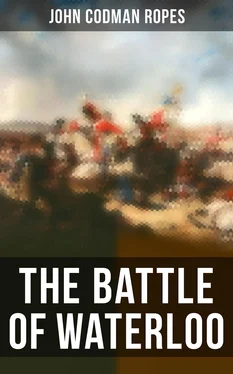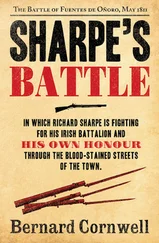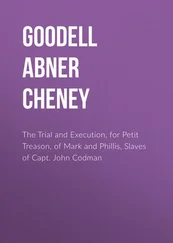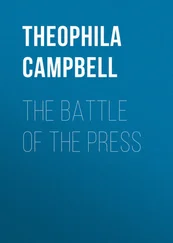“With his passions, and in spite of his errors, Napoleon is, taking him all in all, the greatest warrior of modern times. He carried into battle a stoical courage, a profoundly calculated tenacity, a mind fertile in sudden inspirations, which by unhoped-for resources disconcerted the plans of the enemy. * * * Napoleon possessed in an eminent degree the faculties requisite for the profession of arms; temperate and robust, watching and sleeping at pleasure, appearing unawares where he was least suspected, he did not disregard the details to which important results are sometimes attached. * * * He carried with him into battle a cool and impassible courage; never was a mind so deeply meditative more fertile in rapid and sudden illuminations. On becoming Emperor he ceased not to be the soldier. If his activity decreased with the progress of age, this was owing to the decrease of his physical powers.” And in a note he adds: “In the latter years the Emperor had grown fat; he ate more, slept longer, and rode less; but he retained all the vigor of his mind, and his passions had lost little of their strength.”30
There is in fact no reason to doubt that Napoleon’s habitual activity and even his capacity for physical exertion had in 1815 sensibly diminished. Like most men of forty-five, he was not so full of energy as he had been at five and twenty. He had also grown stout, and he was furthermore a sufferer from some painful maladies which rendered it difficult for him to keep on horseback for any great length of time.31 All these circumstances would naturally tend to diminish, more or less, the once ceaseless activity of his mind; we may, therefore, expect to find him less thoughtful, less vigilant, less careful, than he had been in his earlier campaigns. But it is plain that the standard by which the Napoleon of 1815 is tested is no ordinary standard,32 and it may well be that although he may have failed to come up to the high mark which he formerly attained, we shall nevertheless find in this campaign of Waterloo no conspicuous lack of ordinary activity and energy.
In conclusion, we may fairly say that while we recognize that the army with which Napoleon was preparing to take the field in June, 1815, was not as well-organized a body of troops as some of the armies which he had led to victory, that its corps-commanders were not as brilliant soldiers as were many of the distinguished generals of that period, that peculiar circumstances rendered Soult, Ney and Grouchy less serviceable than they probably would have been had things been otherwise ordered, and that the Emperor himself was more or less deficient in the never-resting activity of mind and body which he had once possessed, we must not forget that the soldiers and their officers were all veterans, that their generals had won their rank by distinguished service on many a bloody field, and that no man living surpassed their leader in military talent. It is not correct to say33 that the army which Napoleon led into Belgium was the finest he had ever commanded, but it is quite certain that it was by far the best of the three armies then in the field.
The strength and composition of this army, was, according to Charras,34 whom we may safely follow, as follows:—
| 1st Corps: d’Erlon. |
|
|
|
| Four divisions of infantry,— |
|
|
|
| Allix, Donzelot, Marcognet, Durutte |
16,885 |
|
Men |
| One division of cavalry,—Jaquinot |
1,506 |
|
„ |
| Artillery,—46 guns,—engineers, etc. |
1,548 |
|
„ |
| Total, |
|
19,939 |
„ |
| 2d Corps: Reille. |
|
|
|
| Four divisions of infantry,— |
|
|
|
| Bachelu, Jerome Napoleon,35 Girard, Foy |
20,635 |
|
Men |
| One division of cavalry,—Piré |
1,865 |
|
„ |
| Artillery,—46 guns,—engineers, &c. |
1,861 |
|
„ |
| Total, |
|
24,361 |
„ |
| 3d Corps: Vandamme. |
|
|
|
| Three divisions of infantry,— |
|
|
|
| Lefol, Habert, Berthezène |
16,851 |
|
„ |
| One division of cavalry,—Domon |
1,017 |
|
„ |
| Artillery,—38 guns,—engineers, &c. |
1,292 |
|
„ |
| Total, |
|
19,160 |
„ |
| 4th Corps: Gérard. |
|
|
|
| Three divisions of infantry,— |
|
|
|
| Pécheux, Vichery, Bourmont36 |
12,800 |
|
„ |
| One division of cavalry,—Maurin |
1,628 |
|
„ |
| Artillery,—38 guns,—engineers, &c., |
1,567 |
|
„ |
| Total, |
|
15,995 |
„ |
| 6th Corps: Lobau. |
|
|
|
| Three divisions of infantry,— |
|
|
|
| Simmer, Jeannin, Teste |
9,218 |
|
„ |
| Artillery,—32 guns,—engineers, &c., |
1,247 |
|
„ |
| Total, |
|
10,465 |
„ |
| Imperial Guard: |
|
|
|
| Old Guard: |
|
|
|
| One division,—Friant,—grenadiers |
4,140 |
|
„ |
| Middle37 Guard: |
|
|
|
| One division,—Morand,—chasseurs |
4,603 |
|
„ |
| Young Guard: |
|
|
|
| One division,—Duhesme,—voltigeurs, &c., |
4,283 |
|
„ |
| Two divisions of cavalry,—Guyot, Lefebvre-Desnouettes |
3,795 |
|
„ |
| Artillery,—96 guns,—engineers, &c., |
4,063 |
|
„ |
| Total, |
|
20,884 |
„ |
| Reserve Cavalry: Grouchy. |
|
|
|
| 1st Cavalry Corps: Pajol. |
|
|
|
| Two divisions,—Soult, Subervie |
2,717 |
|
|
| Artillery,—12 guns, |
329 |
|
|
|
|
3,046 |
|
| 2d Cavalry Corps: Exelmans. |
|
|
|
| Two divisions: Stroltz, Chastel |
3,220 |
|
|
| Artillery,—12 guns, |
295 |
|
|
|
|
3,515 |
|
| 3d Cavalry Corps: Kellermann. |
|
|
|
| Two divisions,—L’Heritier, Roussel |
3,360 |
|
|
| Artillery,—12 guns, |
319 |
|
|
|
|
3,679 |
|
| 4th Cavalry Corps: Milhaud. |
|
|
|
| Two divisions,—Wathier, Delort |
3,194 |
|
|
| Artillery,—12 guns, |
350 |
|
|
|
|
3,544 |
|
| Total, |
|
13,784 |
„ |
| Workmen, waggoners, &c., about |
|
3,500 |
„ |
| Grand Total, |
|
128,088 |
„ |
| Leaving out the last item as consisting chiefly of non-combatants, we have an army consisting of |
|
124,588 |
men. |
| Of these, the infantry numbered, |
|
89,415 |
Men |
| the cavalry, including the horse artillery of the reserve cavalry, numbered, |
|
23,595 |
„ |
| the artillery (344 guns including the above) numbered, |
|
11,578 |
„ |
| Total,38 as above, |
|
124,588 |
„ |












